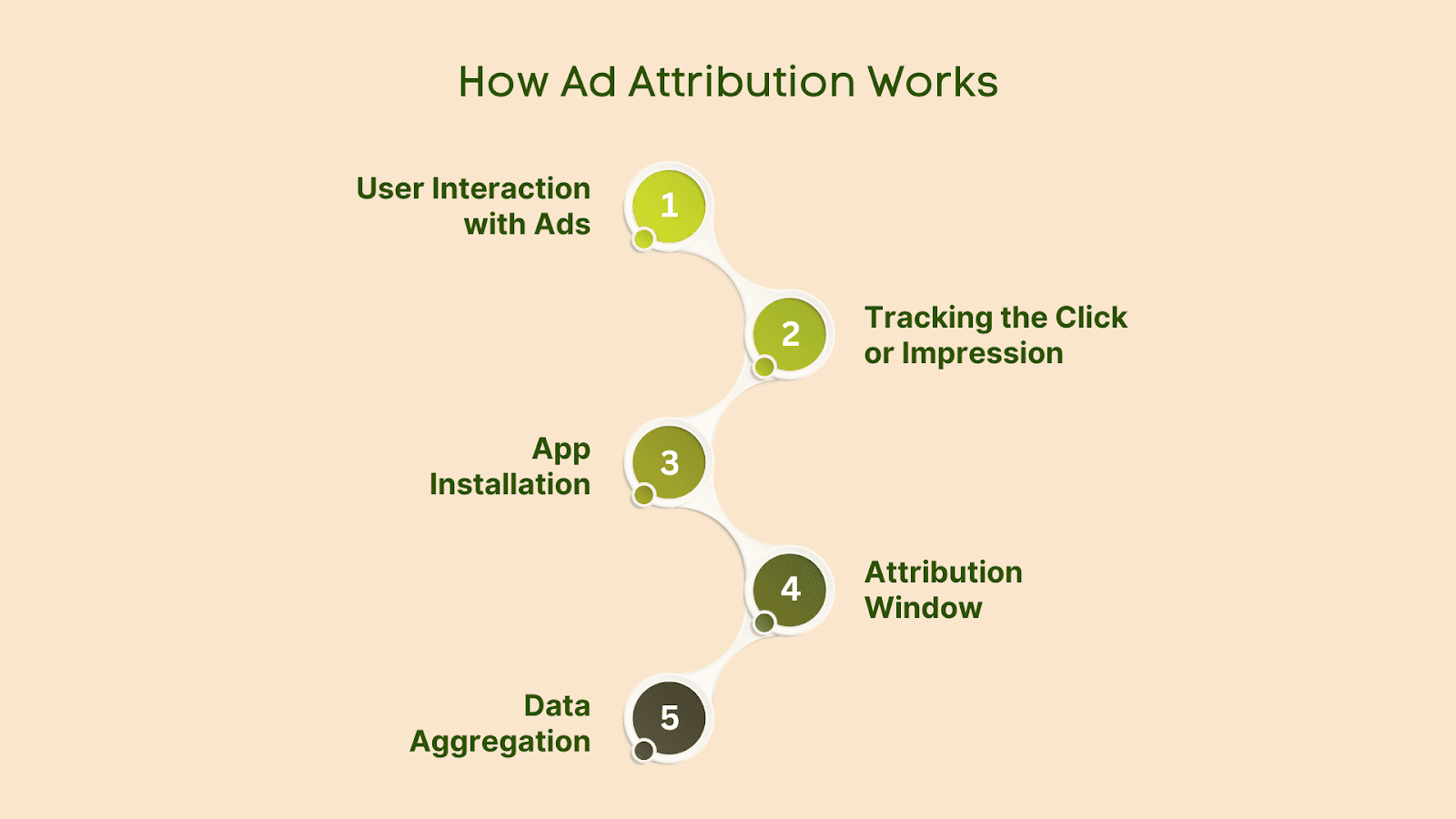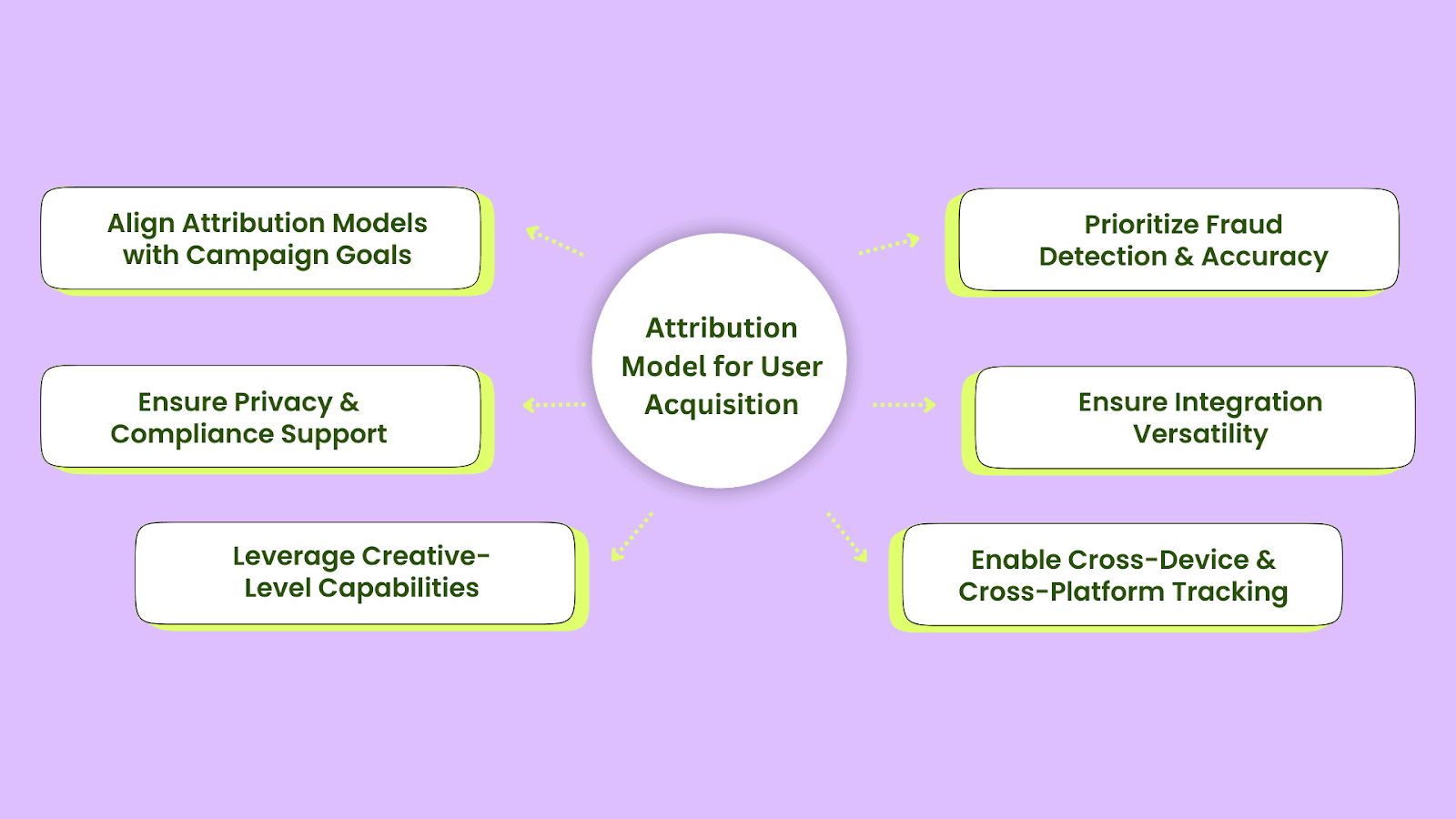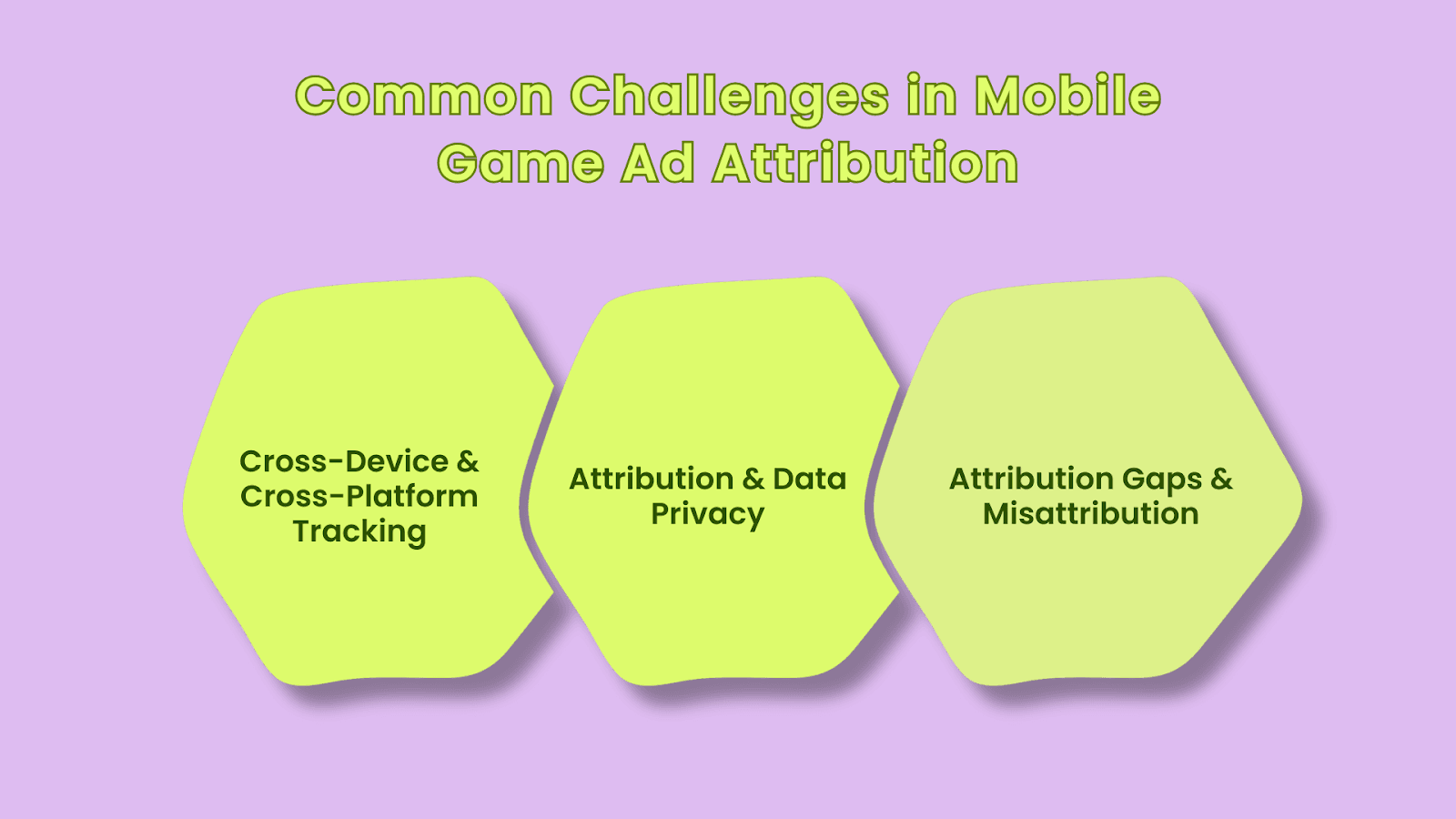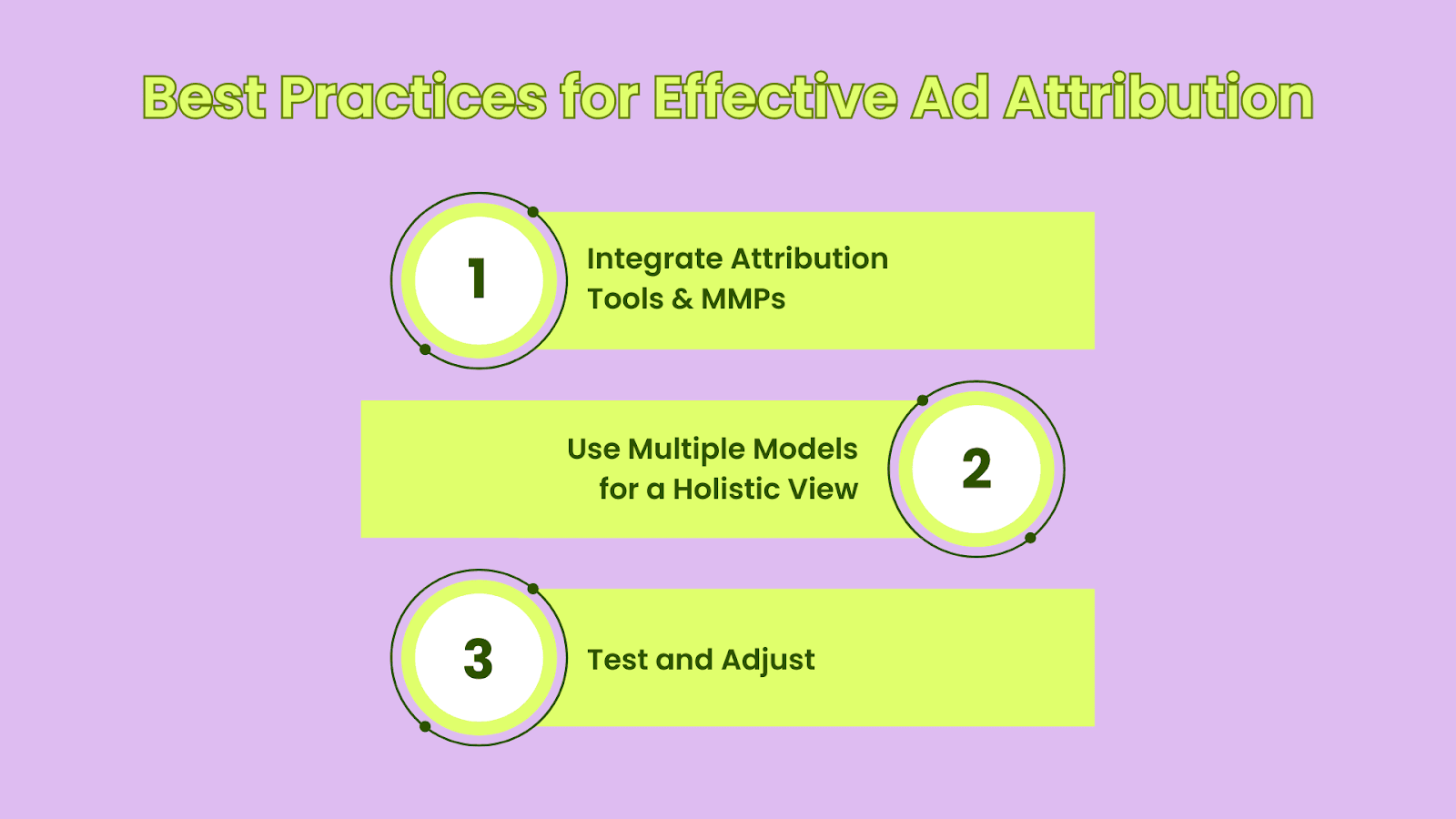Guide to Understanding Ad Attribution Models
Have you ever wondered which ad channel truly drives your game installs? In mobile gaming, pinpointing the exact source of your user acquisition efforts is crucial. With the multitude of platforms available, understanding how each contributes to your game's success can be complex.
This complexity is where ad attribution models come into play. They serve as the compass, guiding you through the intricate user journey from the first ad interaction to the final install.Are you also grappling with questions like: Which ad channel should I invest in to maximize installs? Or how can I accurately measure the effectiveness of my campaigns?
If so, you're not alone. Many mobile game marketers face challenges in deciphering the true impact of their advertising efforts. This guide explores various ad attribution models tailored for mobile gaming user acquisition. Understanding these models will empower you to allocate your marketing budget more effectively and contribute to acquiring high-quality users for your game.
What is Ad Attribution?
In mobile gaming, ad attribution tracks the user’s journey from the first ad interaction to the final game install. It assigns credit to each touchpoint and lets you determine which ads (e.g., banner ads, videos, or playables) or platforms (e.g., Google Ads, Meta, TikTok) lead to user conversions by tracking attribution data.
Attribution is crucial for user acquisition, as it identifies which ad type, platforms and creatives drive new players. By analyzing attribution data, you can optimize your campaigns, invest in high-performing ads, and improve your user acquisition strategy.
How Ad Attribution Works

User Interaction with Ads: When a user clicks on your ad—be it a banner, video, or social media post—a unique tracking link captures this action.
Tracking the Click or Impression: This link directs the user to the app store or landing page while simultaneously sending data points like device ID, IP address, and timestamp to your attribution provider.
App Installation: Upon installing your game, the attribution provider matches this event with the user's previous interaction, associating the install with the specific ad campaign.
Attribution Window: The timeframe between the user's interaction with the ad and the installation is crucial. If the install occurs within this window, the attribution provider credits the campaign for the conversion.
Data Aggregation: All collected data is compiled to provide insights into which ad channels, formats and creatives are most effective in driving installs, enabling you to optimize your user acquisition strategy.
Recent Attribution Developments in Mobile Gaming
1. Privacy-First Attribution Frameworks
SKAdNetwork (SKAN): Introduced by Apple, SKAN focuses on preserving user privacy by providing aggregated data on ad performance. It enables advertisers to measure the effectiveness of their campaigns without accessing user-level data. However, SKAN has limitations, such as restricted post-install event tracking and delayed reporting.
AdAttributionKit (AAK):AAK builds upon SKAN's foundations, offering enhanced capabilities like support for re-engagement campaigns and broader ad format compatibility. It provides more granular insights while maintaining user privacy.
2. SAN (Self-Attribution Networks) Coverage
Many ad networks, like Facebook and Google, offer Self-Attribution Networks (SAN) that allow for more granular insights into user acquisition. These ad networks measure and attribute conversions internally, within its own platform, rather than relying on third-party mobile measurement partners (MMPs). This gives you direct data about your ad campaigns.
3. Incrementality Testing
Incrementality testing determines the true impact of advertising campaigns by comparing the behavior of users exposed to ads with those who were not. This approach let you understand whether the observed conversions are a result of the advertising efforts or would have occurred organically.
4. Marketing Mix Modeling (MMM)
MMM is an analytical approach that assesses the impact of various marketing activities on key performance indicators. In the context of mobile gaming, MMM can evaluate the effectiveness of different user acquisition channels and strategies. This holistic view aids in optimizing marketing spend and improving user acquisition outcomes.
By leveraging these advanced developments, you can enhance your campaign strategies, ensuring they are both effective and compliant with privacy standards.
Now that you understand the concept of ad attribution, let’s explore the various attribution models that let you optimize your user acquisition strategy.
Also Read:The Future of Gaming Marketing: Next-Gen MMM is a Game-Changer
Overview of Popular Ad Attribution Models
Understanding how each user discovers and installs your mobile game is key to optimizing user acquisition (UA). Attribution models assign credit to different marketing touchpoints along the user journey. Below, you'll learn about the most commonly used models:
1. First-Touch Attribution
Description: This model assigns 100% of the credit for a conversion (game install) to the first interaction a user has with your game. It identifies which channels initially capture the attention of potential players.
Best for: If your goal is to discover which channels are most effective at generating initial interest and awareness, the First-Touch Attribution model is ideal for top-of-funnel user acquisition.
Example: Imagine a user sees a Facebook ad about your game. They click on the ad, which leads them to your app store page, where they install the game. In this case, Facebook is credited with 100% of the conversion, as it was the first touchpoint that engaged the user.
2. Last-Touch Attribution
Description: This model gives 100% of the credit to the last interaction a user has before they install your game. It’s helpful for measuring the effectiveness of touchpoints that directly contribute to the final conversion.
Best for: This model is best used for campaigns focused on conversions, where you want to understand which final ad or action leads to installs.
Example: Suppose a user clicks on a Google search ad for your game and then installs it. In this scenario, Google search would get all the credit, as it was the final interaction before the install. This is especially useful if you want to track which last touchpoint lead the conversion.
3. Linear Attribution
Description: Linear Attribution distributes credit equally across all touchpoints a user interacts with before converting. This gives equal weight to each interaction and lets you understand the full user journey from start to finish.
Best for: If you’re looking for a comprehensive view of all the touchpoints that influence conversion, Linear Attribution provides valuable insights across the entire user acquisition process.
Example: Let’s say a user sees a YouTube ad, clicks on a banner ad, and finally installs the game. In this model, each of these three touchpoints (YouTube, banner ad, and installation) would receive equal credit. This gives you a balanced understanding of how each touchpoint contributes to the conversion.
4. Time Decay Attribution
Description: This model assigns more credit to touchpoints that are closer in time to the conversion event. Recent interactions, like retargeting ads, are given higher value because they are considered to have a stronger influence on the decision to install the game.
Best for: This model is great for campaigns where you believe recent touchpoints, like retargeting ads, are more likely to drive the final install.
Example: A user sees a Facebook ad, then receives a push notification, and finally installs the game. Since the push notification is the most recent touchpoint, it would receive the most credit, as it played a pivotal role in prompting the final action that is game installation.
5. Position-Based Attribution
Description: This model assigns more credit to the first and last touchpoints, with the remaining credit distributed among the middle touchpoints. It’s useful in longer acquisition funnels where both the discovery phase and the final push to conversion are essential.
Best for: Position-Based Attribution is ideal when your user journey includes multiple touchpoints, and both initial discovery and final conversion are equally important to your strategy.
Example: Suppose a user first sees a display ad (first touch), clicks on a retargeting ad (middle touch), and then installs the game after receiving an email (last touch). In this case, the first and last touchpoints (display ad and email) would receive the most credit, while the retargeting ad gets less, reflecting its role in the middle of the funnel.
6. Data-Driven Attribution (Machine Learning-Based)
Description: Data-Driven Attribution uses machine learning algorithms to analyze historical data and assigns credit based on the observed impact of each touchpoint. The system learns over time to better allocate credit where it’s due.
Best for: This is best for large-scale, multi-channel campaigns where AI can identify user behavior patterns. It’s optimal for campaigns with lots of touchpoints and data, enabling you to gain more precise insights.
Example: A user is exposed to various touchpoints, including Facebook ads, display banners and google ads. A machine learning algorithm evaluates which touchpoints were most influential in leading to the game install. Based on historical data and patterns, it assigns the credit where it’s most deserved, offering an accurate picture of how different ads and interactions impact user acquisition.
Now that you have a better understanding of the various ad attribution models, it's crucial to choose the one that best aligns with your user acquisition goals.
Selecting the Right Attribution Model for User Acquisition
Choosing the appropriate attribution model is crucial for optimizing your user acquisition efforts in mobile gaming. Here's how to make an informed decision:

Align Attribution Models with Campaign Goals
Your campaign objectives should dictate the attribution model you choose. If your goal is to raise awareness and attract new users, a First-Touch Attribution model might be suitable. For campaigns aimed at converting users who have shown interest, a Last-Touch Attribution model could be more effective. Selecting a model that aligns with your specific goals ensures that you accurately measure the effectiveness of each touchpoint in your acquisition strategy.
Ensure Privacy and Compliance Support
In mobile gaming, adhering to privacy regulations is paramount. Choose attribution models that are compatible with privacy frameworks such as Apple's SKAdNetwork and probabilistic or aggregated methods. These models maintain user privacy while still providing valuable insights into campaign performance. By selecting privacy-compliant models, you not only adhere to legal requirements but also build trust with your user base.
Leverage Creative-Level Capabilities
Understanding which specific creatives or ad formats drive high-quality installs is essential. Opt for attribution tools that enable reporting by individual creatives or channels. This granularity enables you to identify and scale the most effective ads, optimizing your creative strategy for better user acquisition outcomes.
Prioritize Fraud Detection and Accuracy
Ad fraud can significantly impact your user acquisition efforts. Select attribution platforms that offer robust fraud prevention measures and reliable cross-platform tracking. These features ensure data integrity and provide accurate insights into your campaign performance, allowing you to make informed decisions and protect your marketing investments.
Ensure Integration Versatility
Your attribution provider should seamlessly integrate with all key ad networks, analytics tools, and CRM systems. This integration ensures unified reporting and a comprehensive view of your user acquisition efforts across various platforms. A versatile attribution solution facilitates efficient campaign management and data analysis, streamlining your acquisition strategy.
Enable Cross-Device and Cross-Platform Tracking
Users often interact with ads across multiple devices and platforms. Choose attribution models that can stitch a player's journey across devices (mobile, tablet, desktop) for comprehensive attribution coverage. This capability provides a holistic view of the user journey to understand how different touchpoints contribute to conversions and optimize your acquisition strategy accordingly.
By carefully considering these factors, you can select an attribution model that aligns with your campaign goals, complies with privacy regulations, and provides accurate insights into your user acquisition efforts.
To ensure your attribution strategy is effective, it’s important to understand the common challenges that can arise in the process.
Common Challenges in Mobile Game Ad Attribution
Accurately attributing user acquisition in mobile gaming is more complex than ever. As a developer or marketer, you're likely facing several hurdles that can skew your understanding of campaign effectiveness. Let's explore these challenges and how they impact your user acquisition efforts:

Cross-Device and Cross-Platform Tracking: Tracking users across devices (smartphones, tablets) and platforms (iOS, Android) is a major challenge. Users often switch between devices, making it hard to link their interactions.
For instance, a user might discover your game on a Facebook ad via their smartphone, then install it later on a tablet. Without proper cross-device tracking, attributing this install accurately becomes problematic.
Attribution and Data Privacy: Privacy regulations like Apple's App Tracking Transparency (ATT) have limited access to tracking data such as IDFA. This makes it harder to track user behavior and leads to less precise attribution.
As a result, you may need to rely on aggregated data or probabilistic models to understand your users. While this complies with privacy laws, it can make attribution less accurate.
Attribution Gaps and Misattribution: Attribution gaps happen when touchpoints are missed, leading to incomplete data, while misattribution occurs when credit is wrongly given to a touchpoint that didn’t influence the install.
For instance, if a user clicks on an ad but doesn’t install your game until later, giving full credit to that first touchpoint could lead to inaccurate insights. Using more advanced attribution models fills these gaps and prevents misattribution.
Addressing these challenges is crucial for optimizing your user acquisition strategies. To overcome these challenges and ensure more accurate attribution, it's important to adopt best practices that streamline the process and enhance campaign performance.
Recent Advances: SKAdNetwork & AdAttributionKit (AAK)
At WWDC 2025, Apple rolled out iOS 18.4 with major upgrades to AAK, its next-gen attribution framework building on SKAN. Key improvements include:
Overlapping Re‑Engagement Windows via conversion tags; supports multiple campaigns per user.
Configurable Attribution Windows (e.g., shorter for performance campaigns, longer for brand-building).
Cooldown Rules to avoid duplicate installs giving improper credit.
Country Codes in Postbacks geo-coded installs without exhausting conversion-value bits.
Developer Testing Tool to validate setup in Settings.
These enhancements enable more flexible, accurate, and privacy-compliant attribution than ever before
Best Practices for Effective Ad Attribution
To effectively navigate the complexities of mobile game user acquisition, implementing best practices in ad attribution is crucial. Here's how you can optimize your strategies:

Integrate Attribution Tools and MMPs (Mobile Measurement Partners): To streamline tracking and optimize your ad campaigns, use robust attribution software like AppsFlyer or Adjust. These tools automate data collection across multiple ad networks, giving you clear insights into which campaigns drive installs and user engagement.
Use Multiple Models for a Holistic View: Relying on a single attribution model may not give you the full picture. Combine different models, such as First-Touch, Last-Touch, and Time Decay, to better understand the user journey and identify which touchpoints are most effective.
Test and Adjust: User behavior is always changing, so continuous testing is essential. A/B test your targeting strategies, and attribution models to see what works best. Regular adjustments ensure your campaigns stay optimized for maximum user acquisition.
By applying these best practices, you’ll be able to refine your strategies, make informed decisions, and boost your user acquisition efforts.
Also Read: Top Mobile Measurement Partners (MMPs) in 2025
Conclusion
Ad attribution models let you understand how users interact with your game ads before installing. From first-touch and last-touch to advanced models, each offers insights into your user acquisition strategy. Privacy frameworks like SKAdNetwork and AdAttributionKit, along with techniques like incrementality testing and Marketing Mix Modeling (MMM), are transforming the attribution in mobile gaming.
If you're ready to take your user acquisition strategy to the next level, start your journey today with Segwise's AI-powered platform. Start your 14-day free trial in just 2 minutes and begin optimizing your campaigns for maximum impact!
FAQs
1. Who assigns attribution in mobile gaming?
Mobile Measurement Partners (e.g., Adjust, Appsflyer, Singular, Tenjin) offer SDKs and manage attribution across channels, ensuring consistency and fraud prevention .
2. When is data-driven attribution worth using?
Data-driven attribution is ideal if you have large datasets and need precise credit assignment using ML methods; tools like Google Analytics 4 (GA4) and DoubleClick support such models .
3. How do I avoid attribution fraud?
Watch out for install spikes with low engagement and odd device/IP patterns. Use MMP fraud detection tools and carefully vet ad sources.

Comments
Your comment has been submitted successfully!